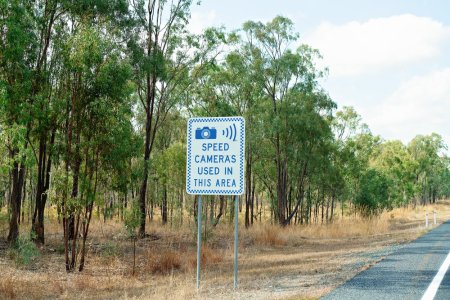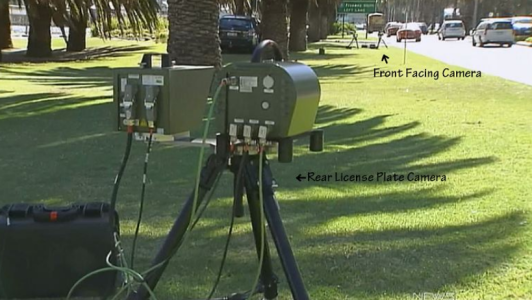State government deploys new safety measures as road toll incidents rise
By
Seia Ibanez
- Replies 39
As we navigate the roads of our beautiful country, safety is paramount.
But for those who might be tempted to push the speed limit or forget to click that seatbelt into place, there's a new reminder that safety comes first—and it might just hit your wallet if you're not careful.
The New South Wales Government is taking a significant step to combat the troubling rise in road fatalities by doubling the number of mobile speed camera sites.
An additional 2,700 locations will soon be available for operators to monitor and catch speeding drivers.

From 1 July 2024, NSW will also activate its seatbelt detection cameras. These high-tech devices will not only look for speeders but also catch motorists who are not buckled up.
This technology isn't entirely new, as the cameras have been in use for detecting mobile phone usage by drivers.
However, the addition of seatbelt detection is a fresh initiative.
NSW is following in the footsteps of Queensland, which introduced seatbelt detection cameras in August 2021, Victoria in April 2023, and Tasmania in August 2023.
The decision to expand the use of these safety systems comes in response to a worrying trend.
In 2023, NSW saw 351 road deaths, an alarmingly close number to the 353 fatalities in 2019 and a 24.9 per cent increase from 2022.
In the past 12 months, from April 2023 to April 2024, 366 road users lost their lives, a 31.2 per cent increase from the previous year.
Despite efforts to incentivise good driving behaviour, such as the trial that wiped one demerit point from the records of 1.2 million motorists who avoided further infringements, the road toll has continued to climb.
The NSW Government has been actively tweaking its policies regarding mobile speed cameras over the past few years.
In late 2020, it removed warning signs ahead of camera locations and reduced the visibility of camera vehicles—a move that was met with public backlash and was partially reversed later in April 2022.
The operating hours of 45 mobile speed cameras were also significantly increased from 7,000 hours per month to 21,000 hours.

Do you think these new safety measures will be effective in reducing road fatalities? Have you had experiences with mobile speed or seatbelt detection cameras? Share your stories and opinions in the comments below!
But for those who might be tempted to push the speed limit or forget to click that seatbelt into place, there's a new reminder that safety comes first—and it might just hit your wallet if you're not careful.
The New South Wales Government is taking a significant step to combat the troubling rise in road fatalities by doubling the number of mobile speed camera sites.
An additional 2,700 locations will soon be available for operators to monitor and catch speeding drivers.

NSW will deploy additional safety measures to combat road death toll incidents. Credit: Shutterstock
From 1 July 2024, NSW will also activate its seatbelt detection cameras. These high-tech devices will not only look for speeders but also catch motorists who are not buckled up.
This technology isn't entirely new, as the cameras have been in use for detecting mobile phone usage by drivers.
However, the addition of seatbelt detection is a fresh initiative.
NSW is following in the footsteps of Queensland, which introduced seatbelt detection cameras in August 2021, Victoria in April 2023, and Tasmania in August 2023.
The decision to expand the use of these safety systems comes in response to a worrying trend.
In 2023, NSW saw 351 road deaths, an alarmingly close number to the 353 fatalities in 2019 and a 24.9 per cent increase from 2022.
In the past 12 months, from April 2023 to April 2024, 366 road users lost their lives, a 31.2 per cent increase from the previous year.
Despite efforts to incentivise good driving behaviour, such as the trial that wiped one demerit point from the records of 1.2 million motorists who avoided further infringements, the road toll has continued to climb.
The NSW Government has been actively tweaking its policies regarding mobile speed cameras over the past few years.
In late 2020, it removed warning signs ahead of camera locations and reduced the visibility of camera vehicles—a move that was met with public backlash and was partially reversed later in April 2022.
The operating hours of 45 mobile speed cameras were also significantly increased from 7,000 hours per month to 21,000 hours.
Key Takeaways
- The New South Wales Government will soon double the number of mobile speed camera sites, with an additional 2700 locations to be added.
- Seatbelt detection cameras will be activated from 1 July 2024 to identify and penalise unrestrained drivers.
- Despite efforts to promote road safety, New South Wales has experienced a significant increase in road fatalities.
- Policy changes concerning mobile speed cameras and demerit point reductions have been implemented, but road deaths continue to rise.
Last edited:









